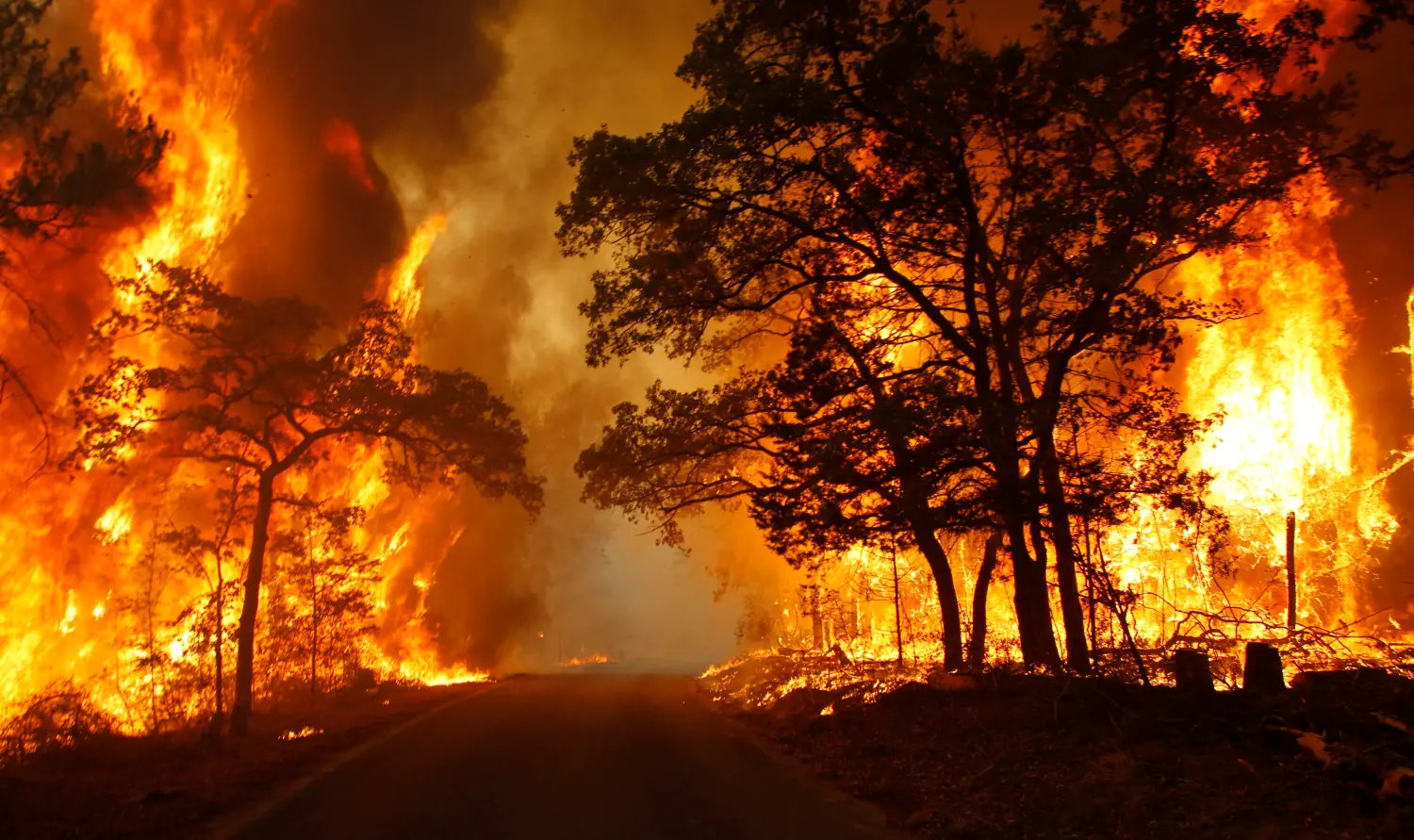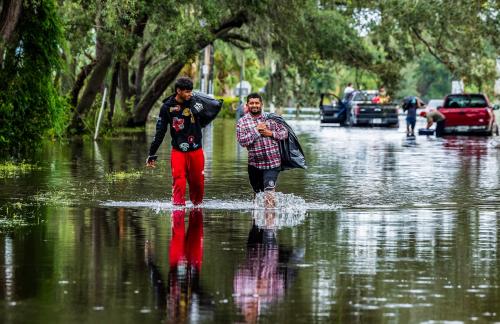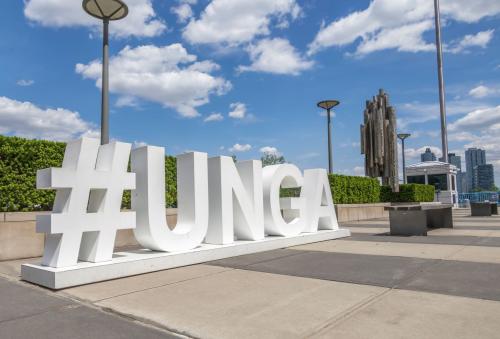From the earthquake and tsunami in Japan to fourteen disasters causing over a billion dollars each in damage in the United States, 2011 was particularly damaging for developed countries. Reviewing 2011’s natural disasters, Elizabeth Ferris and Daniel Petz analyze the range of disasters and lessons to be learned from those that occurred in developed countries.
- 2011 was the most expensive year in terms of disaster losses in history, mostly because of a spate of disasters affecting developed countries. Globally, the economic cost of disasters in 2011 was $380 billion, of which $210 billion were the result of the earthquake and tsunami in Japan. This was 72 percent higher than the losses in 2005, the second costliest year in history of disaster-related losses.
- In terms of both the number of disasters and the number of people affected by them, 2011 was a below-average year in comparison with the previous decade. With 302 disasters recorded by the International Disaster Database (EM-DAT), 2011 saw the lowest number of disasters since the beginning of the millennium. The number of disasters was almost 20 percent below the average annual figure of 384 natural disasters from 2001-2010. There were 206 million disaster-affected persons in 2011, which is about ten percent below the ten-year average.
- Developed countries were particularly hard-hit by disasters in 2011 as evidenced by floods in Australia, earthquakes in New Zealand, an earthquake/tsunami in Japan and a series of disasters in the United States. While natural disasters result in higher economic losses in rich countries, fewer people tend to be affected and loss of life is less than in developing countries. Higher levels of preparedness, resilience and good governance in many cases help richer countries to recover faster from natural disasters than poorer ones.
- While developed countries generally have the resources to respond to the effects of natural disasters, when a major disaster strikes they still have to deal with responding to offers of international assistance.
- The post-tsunami Fukushima nuclear accident in Japan poses serious questions about preparedness for technological and industrial accidents caused by natural hazards as well as questions about the safety of nuclear technology.
- Examples from last-year’s disasters in the rich world show that investment in disaster risk reduction and preparedness pay off and are cheaper than postdisaster reconstruction. Still, high-impact low-probability events can overwhelm the best prepared society.
- Disaster plans and defenses need to be adjusted to a new and shifting “normal.” Because of climate change, predictions are that intervals of heavy precipitation and extreme temperatures will likely become more frequent in the future. In other words, what was formerly a “once-in-a-century” disaster might become a “once-in-a-generation” disaster. Furthermore, new “once-in-a-century” disasters may simply overwhelm the current state of preparations.
- Several positive trends in international humanitarian response were evident in the course of 2011, including promising developments in international disaster law, greater emphasis on disaster risk reduction and preparedness, and better communications during crises, including the use of social media in disaster response.
- Post-disaster recovery and reconstruction after a major disaster are long-term processes which need much more scrutiny and attention. Examples from rich countries suggest that rebuilding processes can be participatory and can incorporate sound principles such as risk reduction and green technologies.
- There are still major methodological difficulties in terms of measuring the effects of natural disasters, especially when it comes to measuring the economic costs of disasters and understanding the particular characteristics of slow-onset disasters such as drought.
- The first famine in twenty years was declared in Somalia in mid-2011, demonstrating the deadly interaction of conflict, political instability and drought that can result in a catastrophe with high human casualties. Although there were warning signs in Somalia for almost a year before famine was declared, the international community was unable to prevent its outbreak due to continuing conflict and the resulting lack of humanitarian access to affected communities.
- The interconnections between disasters (especially mega-disasters), media coverage and humanitarian funding means that humanitarian funding tends to be directed toward disasters that have higher media coverage rather than to those with disaster-affected populations in greater need of assistance. Thus in 2011 almost half of humanitarian disaster funding reported through the UN’s Financial Tracking Service was sent to Japan – where it made up only about a third of one percent of the total economic cost of the disaster. Overall, international humanitarian funding for disasters declined from almost $6.5 billion in 2010 to around $1.5 billion in 2011.
- Global population is aging at an unprecedented scale and yet the special needs of older people in emergencies are often neglected. In 1950 around eight percent of the world’s population was over the age of 60 – a percentage projected to increase to 22 percent by 2050. In disasters such as the earthquake/tsunami in Japan and Hurricane Katrina, older people made up a disproportionate percentage of casualties. Given the fact that developing countries are also experiencing an increase in the percentage of elderly people, it is likely that a lack of focus on older persons in all phases, from planning to emergency management to post-disaster reconstruction, can result in higher fatalities among older people, long-term chronic health issues, psychosocial trauma and isolation. Treating older people simply as “normal” disaster victims denies the specific vulnerabilities that many older people face.
- More work is needed to recognize the positive contributions which older people can make in reducing the risks from disasters, in disaster response and in recovery and reconstruction.
Foreword
Chaloka Beyani, Project Co-Director and UN Special Rapporteur on the Human Rights of Internally Displaced Persons, commends the work of the Project in highlighting the human rights of communities affected by of natural disasters and current trends in disasters and international disaster response.
Downloads:
Chapter 1 - The Year that Shook the Rich
2011 was the costliest year in history in terms of natural disaster damage, in large part due to major disasters which occurred in some developed countries. The earthquake and tsunami in Japan alone were estimated to have caused over $200 billion in damages.
This chapter looks in more detail at the disasters that shook developed countries in 2011, beginning with the Japanese earthquake/tsunami/nuclear accident – the most expensive disaster in history. While the earthquake occurred with a bit over a minute’s warning, the consequences of that disaster will be felt for years, perhaps decades, to come. Discussion then turns to the United States which experienced a string of costly and varied disasters in 2011. Unlike in Japan where energy and attention focused on a single megadisaster, in the United States, different kinds of disasters occurred in succession.
The flooding experienced by residents of Queensland in Australia in the early part of 2011 was on a physical scale greater than that of all other disasters occurring in 2011. And the earthquake that occurred very close to the center of Christchurch, New Zealand in February caused major damage to half of the city center’s buildings, leaving many of them beyond repair.
Although some of our analysis focuses on the economic costs of the disasters in developed countries, for too many people, economic losses paled in comparison with the loss of family members and homes and the disruption to their lives and livelihoods. For all of those affected by disasters – whether in rich or poor countries – it is hard to overstate the experience of personal loss.
Downloads:
Introduction
In terms of the overall number of disasters, 2011 was a quiet year with the International Disaster Database recording 302 disasters, 20 percent fewer than the average of 384 disasters in the last 10 years.1 But for some developed countries, 2011 was a terrible year. The year began with once-in-a-hundred years floods in Australia, quickly followed by a devastating earthquake in Christchurch and a month later by a horrific earthquake/tsunami/nuclear accident in Japan. The US was particularly hard hit as Mississippi River floods were followed by a string of deadly tornadoes, the worst drought in generations, terrible wildfires and then Hurricane Irene which closed down much of the country’s east coast for several days.
This Annual Review begins with an overview of the natural disasters that affected developed countries in 2011 and their consequences. This is followed by an overall assessment of natural disasters in 2011, a quick look back at recovery efforts following disasters in 2010– particularly the earthquake in Haiti and the floods in Pakistan – and a review of some of the major disasters that happened outside the rich world, including some that didn’t receive a lot of media coverage.
Downloads:
Chapter 3 - Somalia: Drought + Conflict = Famine?
This chapter looks briefly at some of the particular characteristics of drought as a natural hazard. Unlike earthquakes or cyclones, where the date (and even the exact time) of the hazard can be identified, droughts do not become disasters until time has passed.
The summer of 2011 produced one of the worst droughts in 60 years in the Horn of Africa, affecting Kenya, Somalia, Ethiopia, Eritrea and Djibouti. In late July 2011, the UN declared the situation in parts of southern Somalia to be a famine in which 3.7 million people – nearly half the country’s population –faced a humanitarian crisis, but most of the issues facing the country were not new. This chapter examines of how drought in Somalia, indeed the Horn of Africa generally, led to famine – a phenomenon the world has not seen for years, since the last famine in Somalia in the early 1990s.
The fact that famine emerged in Somalia in mid-2011 serves as an example of the deadly effects of the combination of severe and prolonged drought, ballooning food and water prices, poor governance, ongoing conflict, and an international response that was inadequate, for many reasons, to meet the needs of millions of people.
Downloads:
Annex
Publications, workshops, articles and other resources produced the Project relating to natural disasters and climate change informed this report.
Downloads:
Chapter 2 - 2011: Natural Disasters Reviewed
This chapter begins by exploring some of the overall disaster statistics in 2011 in comparison with recent years. It takes a brief look at some of the disasters that occurred in 2011 outside the developed world and will examine the ongoing relief and reconstruction efforts following the two 2010 mega-disasters, the floods in Pakistan and the earthquake in Haiti. The third section of this chapter looks at the imperfect science of measuring economic damage caused by disasters, followed by a fourth section, which will analyze trends in international disaster response, looking at developments related to international disaster response law and some of the debates and developments surrounding the humanitarian cluster system. Last but not least, we will review international humanitarian disaster funding for 2011 to see how well (or how poorly) disaster responses were funded in the past year.
Downloads:
Chapter 4 - The Old are the Future
When natural disasters strike, older persons are often disproportionately affected, which is why they are considered to be a vulnerable group by humanitarian actors in need of special attention. But even though this is common knowledge, too often the specific needs of older people are not taken into account when preparing for disasters, responding to them when they do occur or when dealing with the medium and longer-term effects of disasters.
Downloads:
The Brookings Institution is committed to quality, independence, and impact.
We are supported by a diverse array of funders. In line with our values and policies, each Brookings publication represents the sole views of its author(s).



